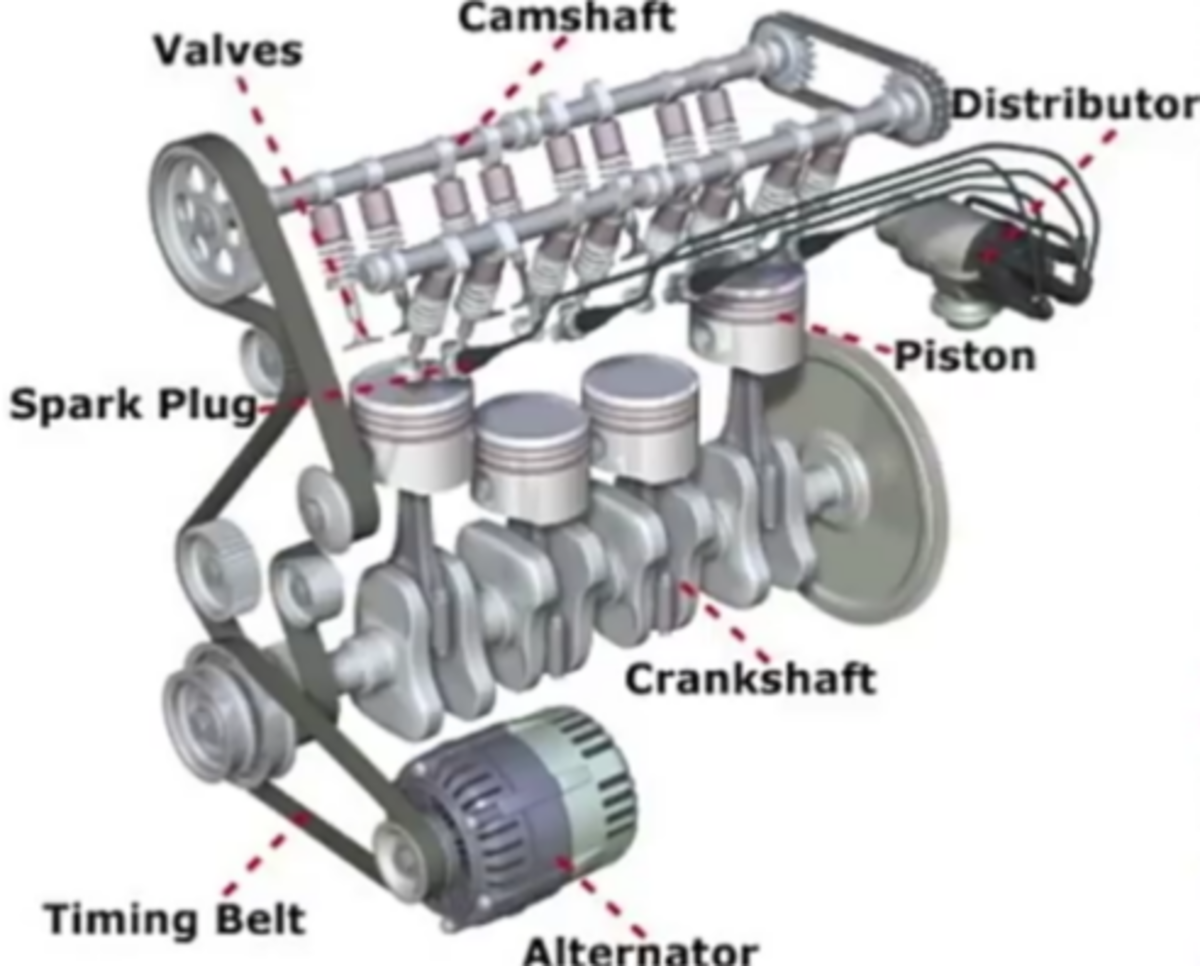Brembo Brakes: How to Install Rotors and Pads
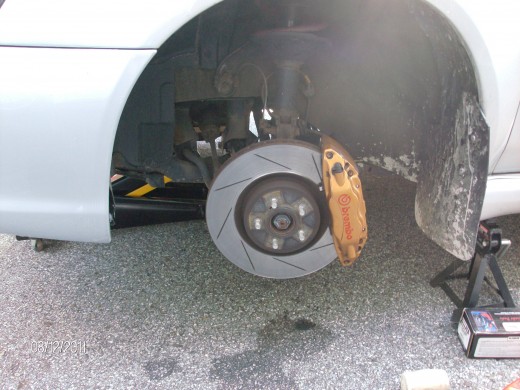
1) Jack Up Car, Remove Wheel
Break lugnuts loose while car is still on the ground. Jack up car and place on jack stands. ALWAYS use jack stands and make sure car is secure.
Remove loose lugnuts by hand or with ratchet. Remove wheel and carefully set aside so that it will not roll anywhere or fall over. Now is also a chance to clean off your pretty Brembo brake calipers with a wet cloth.
2) Remove Brake Pads
Remove two small metal clips that are inserted into holes in the two metal pins that hold the brake pads in place. Then remove each of these pins by placing an old pin or similar-sized metal wire (piece of thick steel wire will work) up to the pointed tip of each one and hitting lightly with a hammer until they slide out of the caliper. They will not slide out until the small clips are removed. A flat metal bracket will pop out from on top of the brake pads.
Some jiggling and pushing is required to loosen up the brake pads. They will slide out from within the caliper by hand.
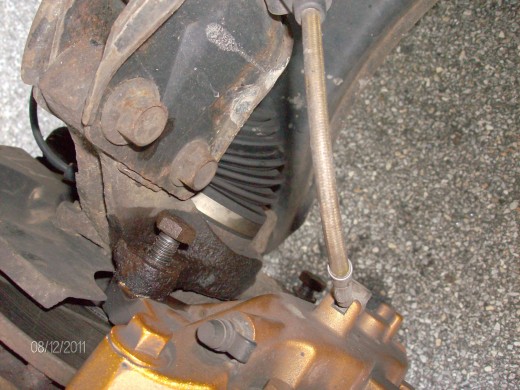
3) Remove Brake Caliper
Soak two bolts holding caliper onto the brake hub with WD-40 or Liquid Wrench, etc. Using ratchet, remove the two bolts. A wrench or a smaller ratchet is required to remove the top bolt, as the bottom bolt from the strut is just barely in the way.
The brake caliper is now only suspended to the car from the brake line. Support the caliper by placing a tall block of wood or a box underneath it for it to sit on while you continue working.
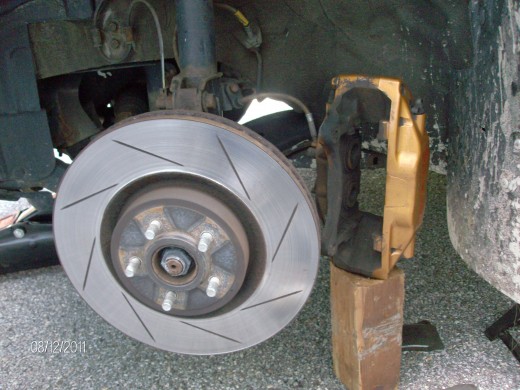
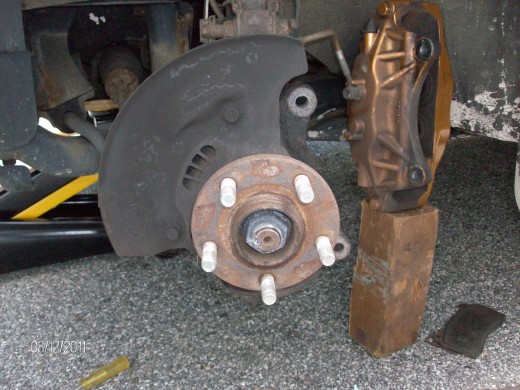
4) Remove and Replace Brake Rotor
The Brembo rotor was not secured to the hub with screws. It should slide right off. It does not budge, you must loosen it by hitting it from behind with a rubber mallet (or hammer assuming you do not plan to use these rotors again).
Slide rotor off and slide new rotor on in same position.
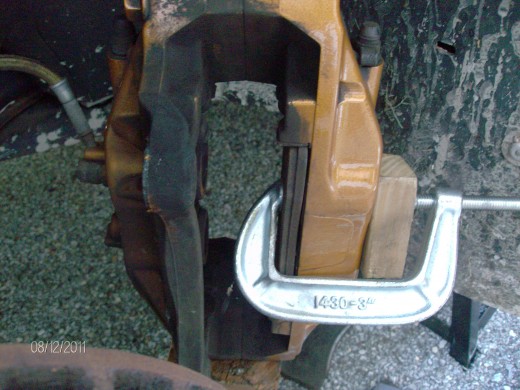
5) Compress Pistons
In order to fit the new brake pads (assuming you are installing new pads), you will need to compress the brake caliper pistons back into the caliper. Loosen the brake reservoir cap in your engine bay to release the extra pressure.
Place one old brake pad back into the caliper up against the pistons and place C-clamps over the pad and the outside of the caliper. Place a small piece of wood in between the outside of the caliper and the C-clamp to prevent scratches. Tighten clamps, therefore forcing the pistons back into the caliper. Repeat this process with the other side of the same caliper. Now there is room for the fresh brake pads to fit.
6) Reinstall Caliper, Pads, Wheel
Now complete the job by reinstalling everything in reverse order. Bolt and torque the caliper back onto the hub with the new rotor. Use anti-squeal grease on the metal shims for and backing plates of the new pads. This will prevent/reduce noise when braking- especially important for big brakes like Brembos. Slide new pads into the caliper, and secure with the metal bracket, pins, and clips. Slide the pins right over the metal bracket and pop the clips into the holes. Make sure you position the pins so that the holes face you before you slide them in.
Obviously, reinstall the wheel, hand tighten the lugnuts, remove jack stands, drop car with the jack, and torque lugnuts down.
Repeat installation instructions on the opposite side of the car.
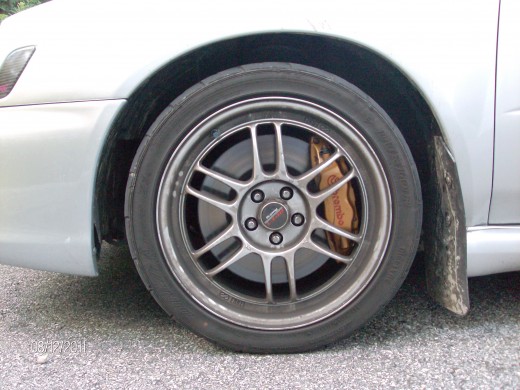
7) Bed-In Brakes
With new pads and/or rotors, it is important to bed them in before continuing to drive. Most people are unaware of this. Bedding-in ensures that there is a flat, clean surface between the rotor and pad and longevity of your brakes.
Take the car out for a drive (on a closed road course if you want to abide by the law) and bring the car up to highway speeds. Then slam on the brakes bringing them close to the point of locking up the wheels and engaging ABS, suddenly bringing the car down to very low speeds. but not to a complete stop. Repeat this several times. Do not touch the rotors after because this generates a great deal of heat.
This process can also cure brakes that pulsate/feel bad if the cause is an uneven deposit of pad material on the brake rotors.
Please see the link below for StopTech's guide to bedding in brakes.
- Bed-In Procedure by StopTech
Procedure for bedding-in new brakes.

